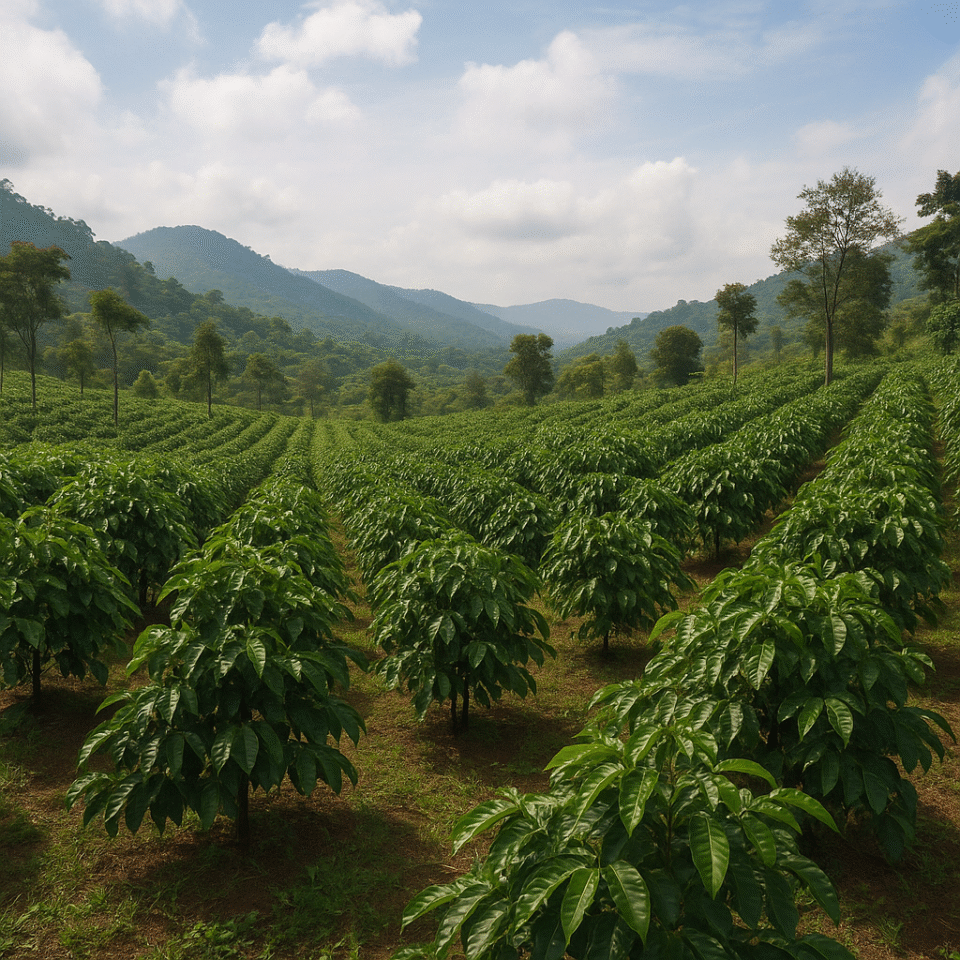Янгон – Qahwa World
Мьянма объявила о планах расширить площади под кофе до 100 тысяч акров в течение ближайших двух лет. Цель инициативы – увеличить экспорт сельскохозяйственной продукции и повысить доходы фермеров. Как сообщили в Департаменте сельского хозяйства, государство окажет поддержку через предоставление семян, саженцев и технической помощи.
По данным ведомства, в настоящее время в стране выращивается около 63 226 акров кофе. Основными сортами являются Арабика, преобладающая в горных районах, и Робуста, которую культивируют в низинах. Новые плантации планируется заложить в таких регионах, как Нейпьидо, Мандалай, Бго, Айяровади, Мон, Танинтайи, Сагайн и Магуэй.
Краткосрочная цель вписывается в более широкую стратегию, впервые озвученную в 2022 году, когда власти заявили о намерении увеличить общие площади под кофе до 300 тысяч акров за пять лет. Тогда планировалось распределить посадки следующим образом: 200 тысяч акров арабики в четырех горных зонах и 100 тысяч акров робусты в трех низинных зонах. Нынешний рубеж в 100 тысяч акров рассматривается как первый шаг на пути к этой цели.
На местах уже есть заметные результаты. Так, в регионе Танинтайи в 2024–2025 финансовом году площади кофе выросли почти на 1 874 акра, достигнув в общей сложности более 3 тысяч акров. На 2025–2026 годы запланировано еще 1 000 акров, при этом фермерам предоставлено около 170 тысяч саженцев и специализированное обучение.
Кофе давно рассматривается как перспективная экспортная культура для Мьянмы, однако инфраструктурные ограничения и доступ к рынкам остаются серьезными проблемами. По оценкам за 2023 год, годовой объем производства превысил 9 тысяч тонн, из которых около 7 тысяч тонн пришлось на арабику и чуть более 2 тысяч тонн – на робусту. Основным центром производства остается штат Шан и другие горные районы.
Аналитики отмечают, что при всей амбициозности планов кофейные деревья начинают приносить урожай только через три–пять лет, а значит, новые посадки не дадут мгновенного эффекта для экспорта. Эксперты подчеркивают необходимость инвестиций в перерабатывающие мощности, транспорт и развитие связей с международными рынками, чтобы кофе из Мьянмы мог конкурировать на мировом уровне.
Стремление Мьянмы ускоренно нарастить площади под кофе подчеркивает решимость страны диверсифицировать экспорт и поддержать сельские общины. Однако разрыв между заявленными целями и подтвержденными результатами остается значительным, что вызывает вопросы о темпах выхода на мировой рынок.
